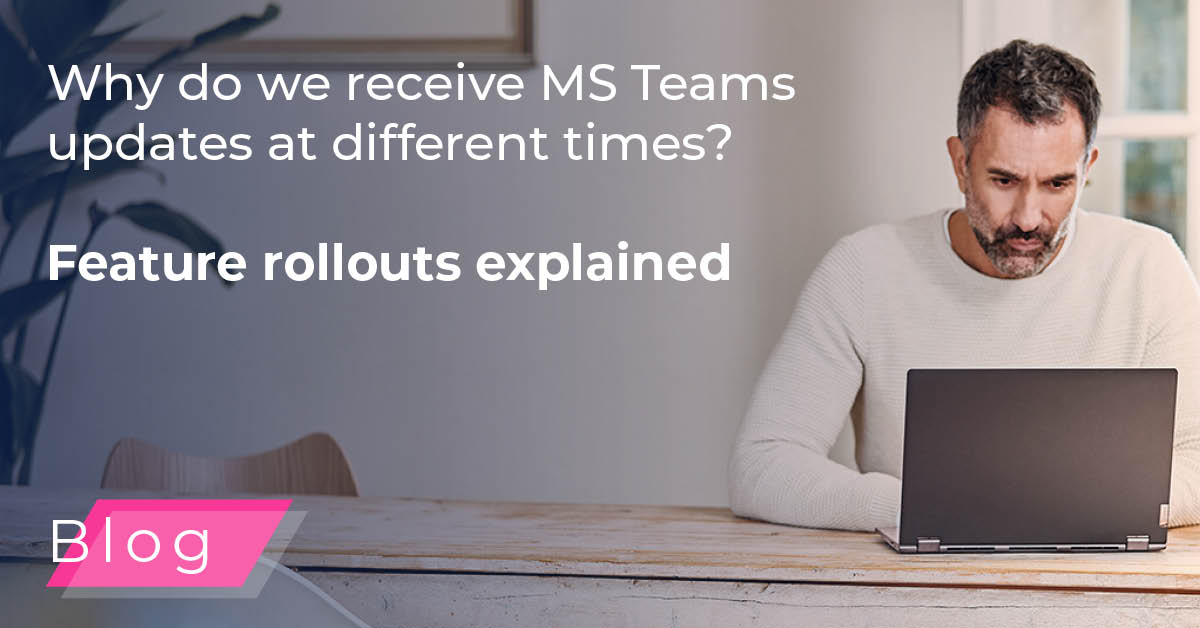Stay service-savvy
Get all the latest news and insights straight to your inbox.

We're hearing this question a lot “I am running the same version as my coworker, but they have a feature I don’t. Why don’t I have that feature now? And how can I get it now?” To answer this, let's shed some light on Microsoft's overall release process.
Microsoft take a very orchestrated approach when rolling out new features.
With multiple updates that get rolled out: web, desktop (Windows, Mac, Linux), mobile (iOS, Android) and packages for conference room devices. Each of these packages are backed by feature flag configurations that allow Microsoft to ship a new Teams version and enable features separately.
Microsoft roll out features in two steps:
Both activities happen progressively, but at different times. Microsoft first ship the build with the feature flags turned off. They progressively roll out the build to users, wait for the build to be picked up and used by users, and reach certain penetration rates. Microsoft then run scorecards for key performance and usage metrics between the prior build and the new build to ensure we are not introducing any form of regression with the latest version.
Once Microsoft have scorecards and confidence in the version, they then begin to progressively enable feature flags – making the new features available for users.
Below is a high-level view of Microsoft's audience segmentation. Each ring represents an audience with specific gating criteria to allow them to exit the build and the feature flag, and to progress them to the next ring.

When Microsoft roll out feature flags within a ring, this is where users will usually see differences in features within the same version. They roll features and versions out on in increasing percent tranches at user level (considering the worldwide user pool and not at an organisation/tenant level) as it gives them the best cross section of use cases, hardware configurations, software configurations, network topology, bandwidth availability, etc, to validate changes and the user experience they provide – but this does mean that co-workers on the same build can see differences in their features. Rolling out feature flags by organisation introduces the potential to bias results with similar hardware, bandwidth, and usage patterns, so Microsoft focus on getting a cross section of users and usage patterns with our rollouts.
In December 2020 Microsoft announced the availability of Teams Public Preview. Public Preview is a great mechanism to expose a subset of your user base to features a little ahead of everyone else. This allows you to get familiar with new features before they are available to all users.

Get all the latest news and insights straight to your inbox.